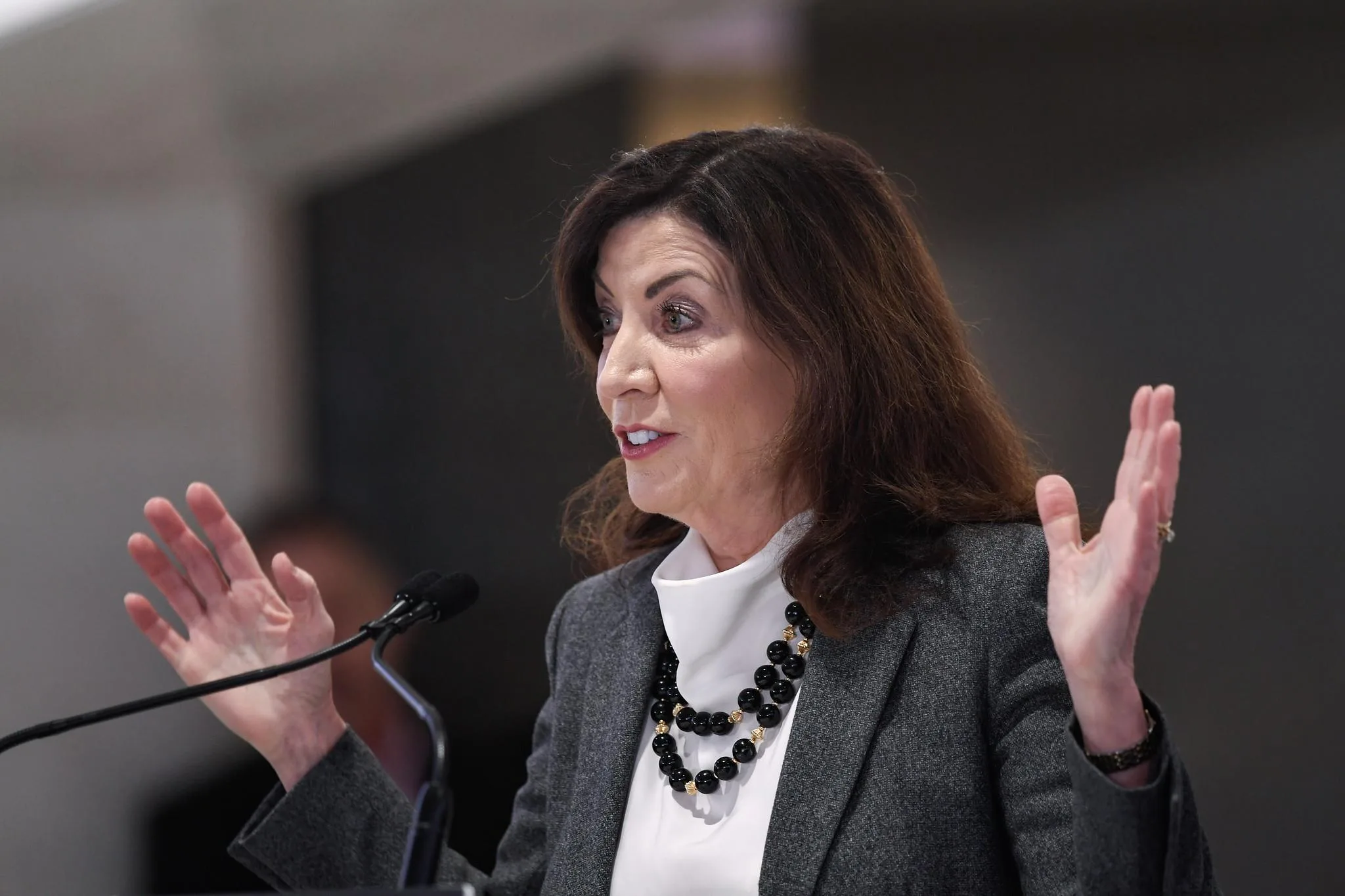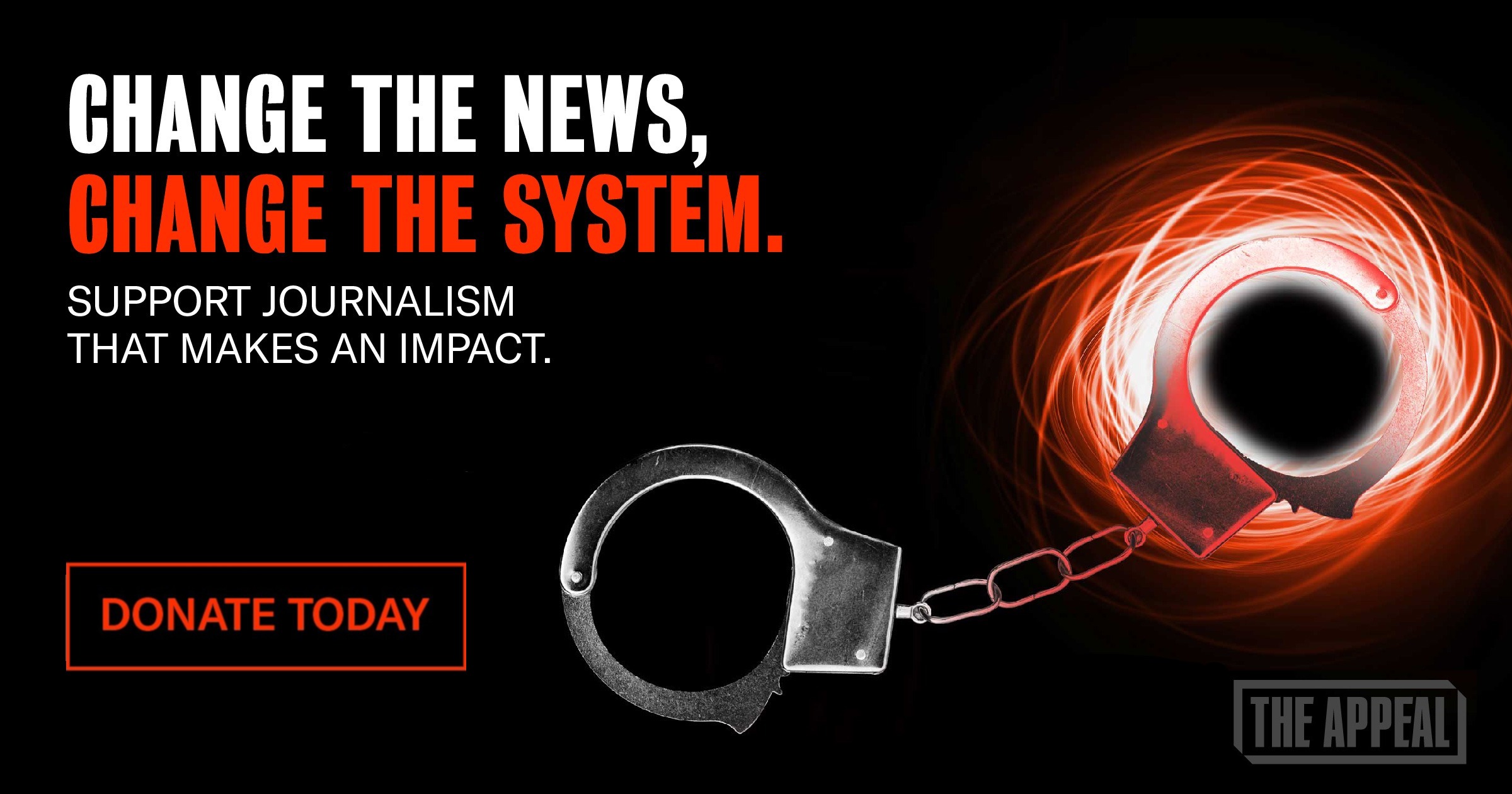What’s Really Going on in the NYC Subway?
New York officials have flooded the subway system with cops and military personnel in a show of “security theater.” Will it actually make people safer—and is that even the point?

New York City residents entered the subway system’s major transit stations Thursday morning to find National Guard soldiers searching passengers’ bags. Just a day earlier, New York Gov. Kathy Hochul, a Democrat, announced the deployment during a press conference in which she laid out a program to increase surveillance and inspections of subway riders, raising alarms for New Yorkers and civil rights advocates.
Hochul’s plan quickly ignited debate. Many critics called the move a heavy-handed and potentially unconstitutional response to a perception—not borne out by data—of a crime wave on the city’s subway system. The governor attracted further scrutiny in media appearances Thursday morning—she appeared to wave away statistics showing recent declines in subway crime and claimed that she cared most about people’s “feelings and emotions” around their safety.
“If you feel better walking past someone in a uniform to make sure that someone doesn’t bring a knife or a gun on the subway, then that’s exactly why I did it,” Hochul told MSNBC’s “Morning Joe” in an interview Thursday morning.
In response to several questions emailed to the governor’s office, a spokesperson for the governor directed The Appeal to Hochul’s interview on “Morning Joe.”
The governor’s actions are just the latest in a string of moves to militarize the subway system, including similar efforts by New York City Mayor Eric Adams to beef up policing and surveillance on the city’s public transit system.
As New Yorkers begin to navigate the influx of soldiers and law enforcement officers in their subway stations, The Appeal is taking a closer look at what’s happening, how we got here, and the possible effect of these moves on civil rights and public safety.
“This is a political stunt, and it’s a bad one,” movement lawyer and commentator Olayemi Olurin told The Appeal. “This is clearly something Hochul is doing to appeal to the upstate New Yorkers who don’t even ride the subway, who believe that the city is too lawless, it needs to be policed this way because a bunch of Black and brown people live here.”
What is happening?
Hochul dispatched nearly 1,000 people to the subway—including around 750 members of the National Guard and other officers from the state and Metropolitan Transit Authority (MTA) police forces. On Thursday, National Guard troops dressed in military fatigues began conducting random bag searches. Passengers can refuse the inspection but will be denied entry at that subway station. Hochul has not said how long the deployment will last.
While the price tag remains unclear, the governor’s plan is “a massive over-investment in security theater for the sake of optics,” Michael Sisitzky, the assistant policy director at the New York Civil Liberties Union (NYCLU), said.
A militarized public transit system is just one piece of Hochul’s plan. She has also proposed expanding existing state law to let judges ban people convicted of assaulting a passenger or an MTA contractor from using public transit for up to three years. The current statute allows such bans for people convicted of sexually assaulting passengers or of assaulting or sexually assaulting MTA workers.
Under Hochul’s amendment, judges could exile people from transit systems statewide. It also requires the MTA to be notified of all bans issued.
Advocates say Hochul’s proposal would do nothing to make the subway safer.
“We all know what delivers public safety, which is solutions and not scare tactics,” said Insha Rahman, vice president of advocacy and partnerships at the Vera Institute of Justice. “Stability is actually the biggest driver of safety and more police officers can’t offer somebody a way to stability.”
Bans could also make it nearly impossible for people with qualifying convictions to get to work, school, or even court—a downstream effect that advocates fear could have broader implications for the debate over bail reform.
“When they can’t take the subway to make their court dates, Hochul and Eric Adams are going to get up and they’re going to tell us that because of bail reform, people are not returning to court and that’s why we need to rollback bail reform and more people need to be in Rikers,” Olurin said. “They’re literally creating the conditions necessary for them to justify the over-criminalization that they wanted to make happen.”
Hochul said she was also expanding a controversial pilot program that sends mental health clinicians paired with police officers to respond to people experiencing a perceived mental health crisis in the subway system.
“These teams will work to get them out of the subways, they already are there, get them services and support,” said Hochul. “And if something bad happens, they can use force if necessary to have them removed from the subway. In many cases, it means getting them into the psychiatric hospitals.”
Why is this happening?
Tough-on-crime proposals are often motivated more by cherry-picked anecdotes than actual crime trends. Hochul’s subway plan is no exception. Just last week, a train conductor received more than 30 stitches after he was slashed in the neck, a crime that sparked a brief work stoppage—and major service delays—as MTA workers complained about unsafe working conditions.
“These brazen, heinous attacks on our subway system will not be tolerated,” Hochul said Wednesday. “So today in the wake of these latest attacks, I’m unveiling a five-point plan to rid our subways of people who commit crimes and protect all New Yorkers, whether you’re a commuter or a transit worker.”
Despite sensationalized coverage of individual transit crimes, New Yorkers actually feel safer on the subways than they did in previous years according to the MTA’s customer service surveys. In November, about 50 percent and 54 percent of survey respondents said they felt safe in subway stations and on trains, respectively. This is a significant increase from the previous year, when those numbers were 42 and 46 percent. The MTA received responses from more than 115,000 subway riders.
“This is a plan that’s based on vibes and not actual realities,” the NYCLU’s Sisitzky said. “There are high profile incidents that are now being used to stoke fears of a crime wave that simply does not exist.”

Is the subway really that unsafe?
This can be a difficult question. Unlike Hochul, we believe statistics are essential in establishing a baseline grounded in reality. Overall, subway crime has actually been on the decline over the past two years. The same day that Hochul announced her plan, Adams tweeted stats showing a 15 percent reduction in transit crime in February 2024 compared to the year before. Taking a broader view, major felonies in the subway system remain near historic lows according to an analysis published by Hell Gate.
But crime data is hardly ever straightforward. The NYPD’s latest weekly crime report shows that year-to-date transit crime is, in fact, up in the first two-plus months of 2024 versus the same period last year. But this is a small window and may not predict the rest of the year.
Violence in the subway remains a specific point of concern. The NYPD says it recorded a total of 570 assaults on the system last year—the most since at least 1996 and around a 2.5 percent increase over 2022.
But it’s worth noting a few things about how this fits into overall perceptions of safety. The MTA logged more than 1 billion subway rides last year. Assaults remain a vanishingly rare occurrence across the system. But this context quickly gets buried under tireless, tabloid-driven media coverage of outlier incidents.
We must also acknowledge that these assaults took place after Adams dramatically increased the number of NYPD officers in the subway. If Hochul, Adams, and other New York leaders want us to believe more cops and soldiers are necessarily a deterrent to the crimes that people fear most, the data simply doesn’t bear that out.
Is there precedent for randomly searching the bags of New York City subway passengers?
Yes. In 2005, after bombings on transit systems in Madrid, Moscow, and London, the NYPD initiated the Mass Transit Bag Inspection Program, also known as the Container Inspection Program. NYPD officers selected subway riders for random bag searches. Those who refused were denied entry.
The NYCLU sued the city in response and asserted the program was unconstitutional. But Manhattan’s federal district court ruled the plan was “an effective measure to help deter and detect a terrorist attack against New York City’s subway system.” The need to prevent such an attack “is a governmental interest of the very highest order,” the judge wrote. The ruling was upheld on appeal.
Is Hochul’s bag search plan legal?
The NYCLU’s Sisitzky told The Appeal that, at this point, it’s hard to tell.
“There’s still a lot that we need to learn about exactly what protocols are being put in place to compare how much this really tracks with what the courts have previously authorized,” he said.
Sisitzky left open the possibility of a future legal challenge.
Who will be harmed by Hochul’s transit safety plan?
Hochul has dismissed concerns that the program will lead to racial profiling.
“There’s a scheduled stop of individuals, to look at their bags based on numbers,” the governor said on “Morning Joe.” “Not who the person is, not how they look, but there is a thought-out process to make sure that we’re not selecting individuals, we’re not profiling people.”
But advocates say this could once again lead to law enforcement over-policing and criminalizing people of color. For instance, stop-and-frisk has long been used primarily against Black and Latino New Yorkers. Of the more than 16,900 stops recorded by police last year, almost 60 percent were Black and about 30 percent were Latino, according to an NYCLU analysis of NYPD data. Most people stopped by the NYPD were not arrested or issued a summons. And almost 90 percent of the daily population at Rikers Island, the city’s notorious jail, are Black or Hispanic.
“It’s not like we don’t know what’s happening and what the dog whistle is,” Olurin said. “They’re going to search people’s bags and they’re going to pick people to stop and who do we think they’re going to choose? They’re going to choose the white man getting off at his Manhattan stop or the Wall Street businessman, or are they going to choose people who look like me?”
